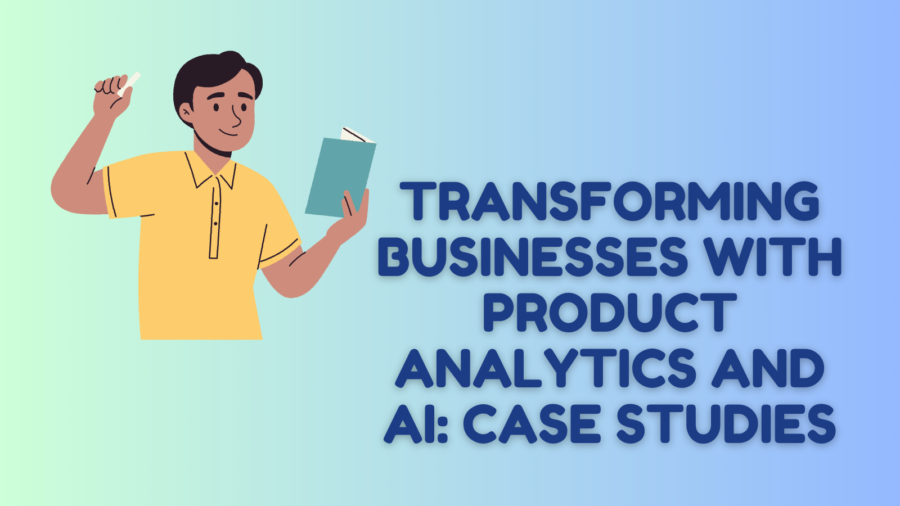Introduction
In the realm of modern transportation, Uber has emerged as a transformative force, reshaping how we move from point A to point B. While its innovative app and convenient ridesharing service are well-known, the driving force behind Uber’s meteoric rise lies in its strategic use of product analytics. This blog post takes a deep dive into the captivating case study of Uber’s application of product analytics, shedding light on how data-driven insights have revolutionized the transportation industry and shaped Uber’s success story.
The Essence of Product Analytics
Optimizing Supply and Demand
At the core of Uber’s triumphant journey is its adept use of product analytics to balance supply and demand. By meticulously analyzing rider demand patterns, traffic flow, and historical ride data, Uber ensures that drivers are strategically positioned to meet riders’ needs efficiently. This seamless coordination not only minimizes wait times for passengers but also maximizes earnings potential for drivers. The success of Uber’s “surge pricing” model, which adjusts fares based on demand, underscores how product analytics optimizes supply and demand dynamics, creating a win-win scenario for both riders and drivers.
Enhancing User Experience
Uber’s success in the transportation landscape can be attributed to its relentless pursuit of enhancing user experiences through product analytics. By studying user behavior, feedback, and ratings, Uber identifies pain points in the user journey and takes swift action to address them. For instance, if analytics reveal that users often struggle to find their drivers, Uber can refine the app’s interface to provide clearer directions and real-time updates. This commitment to user-centric design, driven by product analytics, ensures that riders and drivers have a seamless and enjoyable experience.
Driving Safety and Innovation
Data-Driven Safety Measures
Uber’s application of product analytics goes beyond convenience; it extends to ensuring the safety of both riders and drivers. By analyzing ride data and identifying potential risk factors, Uber enhances safety protocols. For example, if analytics detect unusual route deviations or abrupt stops, Uber’s algorithms can trigger real-time alerts to both drivers and riders. This proactive approach to safety demonstrates how product analytics can drive innovation that directly impacts user well-being.
Pioneering Innovation
Uber’s case study on product analytics reveals its role in pioneering innovation within the transportation sector. By analyzing data from various sources—such as traffic patterns, weather conditions, and user preferences—Uber has introduced innovative features like “UberPOOL” and “UberEATS.” These offerings cater to evolving customer needs while optimizing resources. Product analytics not only guides the development of new services but also fine-tunes existing ones, ensuring that Uber remains a trailblazer in the industry.
Elevating Business Strategies
Data-Driven Expansion
Uber’s global expansion is underpinned by its astute use of product analytics. By analyzing market trends, user behavior, and local preferences, Uber customizes its services to suit specific regions. For instance, if analytics indicate a high demand for motorcycle taxis in a certain market, Uber can introduce “UberMOTO” to cater to this need. This data-driven approach to expansion enables Uber to enter new markets with services that resonate, driving user adoption and business growth.
Economic Impact
Uber’s case study on product analytics also underscores its impact on the economy. By analyzing ride data and driver earnings, Uber provides valuable insights into the gig economy landscape. This data can inform policymakers, economists, and researchers about employment trends, income generation, and transportation habits, offering a broader understanding of how technology influences economies around the world.
Conclusion
Uber’s remarkable journey from a disruptive startup to a global transportation phenomenon is irrefutably intertwined with its strategic use of product analytics. Through optimizing supply and demand, enhancing user experiences, driving safety and innovation, and elevating business strategies, Uber showcases how data-driven insights can reshape industries and redefine user expectations. The case study of Uber’s application of product analytics is a compelling testament to how technology and data can drive unparalleled innovation and success. As the transportation landscape continues to evolve, Uber’s commitment to harnessing the power of product analytics will undoubtedly keep it at the forefront of industry transformation and user-centric solutions.





